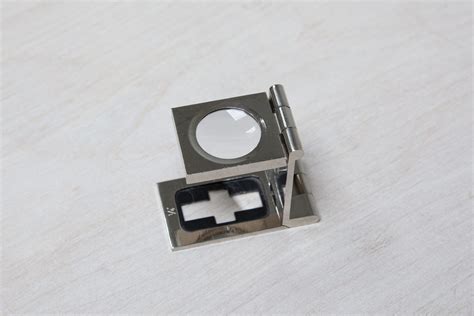Boost Your Accuracy: Thread Counting with a Magnifying Glass
For knitters, crocheters, and textile enthusiasts, understanding thread count is crucial. Whether you're meticulously choosing yarn for a delicate shawl or analyzing the quality of a vintage fabric, accurately determining the thread count significantly impacts your project's success. While digital tools exist, a simple magnifying glass remains an invaluable tool for precise thread counting, offering both affordability and accessibility. This article will guide you through the process, addressing common questions and providing tips for achieving accurate results.
Why is Thread Counting Important?
Understanding thread count – the number of threads per inch (TPI) in both the warp (lengthwise) and weft (crosswise) directions – provides invaluable information about a fabric's characteristics. Higher thread counts generally translate to:
- Increased Durability: More threads mean a tighter weave, resulting in a more resistant and long-lasting fabric.
- Improved Drape and Texture: Fine thread counts create smoother, more fluid fabrics, while coarser counts yield a heavier, more structured feel.
- Better Quality Assessment: Thread count helps determine the quality and value of fabrics, particularly in the context of vintage textiles or high-end materials.
- Accurate Yarn Selection: Knitters and crocheters can use thread count information from existing samples to choose yarn that will produce a similar fabric weight and drape in their projects.
How to Count Threads with a Magnifying Glass: A Step-by-Step Guide
The process of thread counting with a magnifying glass is straightforward but requires patience and attention to detail. Here’s how to do it effectively:
-
Choose Your Sample: Select a representative piece of fabric or yarn. Ensure the area is flat and free from wrinkles or distortions.
-
Prepare Your Magnifying Glass: Select a magnifying glass with sufficient magnification to clearly distinguish individual threads. A 10x to 15x magnification is generally ideal.
-
Mark Your Area: Use a ruler or a fabric marking pen to delineate a precisely one-inch square on your sample. Accurate measurement is paramount for accurate results.
-
Count the Warp Threads: Carefully count the number of vertical (warp) threads within your one-inch square using your magnifying glass. Take your time and double-check your count to ensure accuracy.
-
Count the Weft Threads: Now, count the number of horizontal (weft) threads within the same one-inch square. Again, meticulous counting is essential.
-
Record Your Findings: Note down the number of warp threads and weft threads. For example, you might record it as "Warp: 60 TPI, Weft: 45 TPI".
What Magnification Should I Use?
The ideal magnification level for thread counting depends on the fineness of the fabric. For tightly woven fabrics with fine threads, a higher magnification (15x or higher) is recommended. For coarser fabrics, a lower magnification (10x) might suffice. Experiment to find the magnification level that provides the clearest view of individual threads without excessive distortion.
What if I'm Counting Threads in Knitted or Crocheted Fabric?
Counting threads in knitted or crocheted fabric is slightly different. You will count stitches instead of threads, referring to them as stitches per inch (SPI). The process remains the same; you measure a one-inch square and meticulously count the stitches.
Why is Precision so Important?
Even slight inaccuracies in thread counting can significantly affect your conclusions. A miscount of just a few threads can alter the perceived fabric quality or lead to inappropriate yarn choices. Precision ensures your results are reliable and useful.
Tips for Accurate Thread Counting
- Good Lighting: Ensure you have bright, even lighting to avoid shadows that might obscure threads.
- Take Breaks: If you're working with a dense fabric, take short breaks to avoid eye strain and maintain focus.
- Double-Check Your Work: Always double-check your counts to minimize errors. Having a second person verify your count can also be helpful.
By following these steps and tips, you can master the art of thread counting with a magnifying glass, unlocking a deeper understanding and appreciation of textiles. Accurate thread counts provide invaluable information for both crafting and textile analysis, transforming your projects and knowledge.

